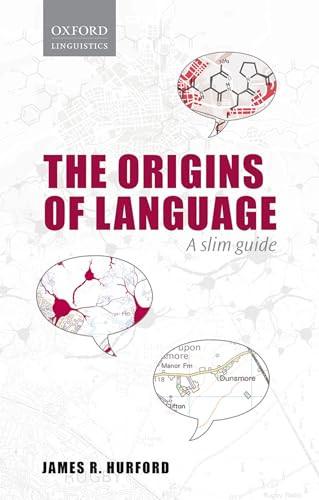Vontarius Falls 's Key Ideas from Origins of Language
by James R. Hurford
Ideas, facts & insights covering these topics:
7 ideas
·59 reads
1
Explore the World's Best Ideas
Join today and uncover 100+ curated journeys from 50+ topics. Unlock access to our mobile app with extensive features.
Chapter 1 - The Problem
Early humans likely started with emotional vocalizations like crying, laughing and grunting to express needs and feelings. Over time, the ability to control vocalizations and associate sounds with meanings developed. This gradual transition from emotional vocalizing to structured language poses the fundamental question this book explores: How and why did human language originate? Language sets us apart in its complexity, conceptual requirements and social nature. The origins of this unique ability are shrouded in mystery.
2
9 reads
Chapter 2 - Laughing & Crying
The roots of language lie in emotion and communication of needs. Proto-language likely began as involuntary emotional vocalizations like crying, laughing, grunting and growling. These helped strengthen social bonds and coordinate group activities. Over generations, some vocalizations became associated with specific emotions, objects or situations, laying the groundwork for referencing the world through sounds. However, early vocalizations were still largely constrained by emotion.
2
11 reads
Chapter 3 - Pointing & Naming
While emotional vocalizations still predominated, the ability to point at and reference objects through gestures likely emerged first. Pointing allowed early humans to jointly attend to and communicate about objects in their environment. This led to the next breakthrough - making voluntary vocal sounds to label and name objects. Naming objects through learned vocal associations began the transition from emotion-driven to symbol-driven communication.
2
10 reads
Chapter 4 - Words & Combining Words
Once individuals sounds became associated with specific meanings and functions as words, the ability to combine words into larger utterances emerged. Word combinations exponentially increased the expressive power of language by allowing the description of actions, qualities and relationships. However, early word combinations were likely holistic and lacked systematic syntactic rules.
2
9 reads
Chapter 5 - Generativity & Recursion
The crucial step - developing recursive syntactical rules that allow words to be combined in an open-ended number of ways - enabled the true generativity of human language. Recursive rules allow an infinite number of grammatical and meaningful sentences to be generated from a finite set of words. This property sets human language apart and likely emerged gradually through cultural and genetic evolution.
2
7 reads
Chapter 6 - Explaining Language Evolution
Various theories attempt to explain how and why human language evolved. The social intelligence hypothesis posits that language co-evolved with our social cognitive abilities. The ecological dominance hypothesis argues that language helped humans adapt and spread across diverse environments. The genetic change hypothesis proposes that mutations affecting language areas of the brain occurred. Likely a combination of social, ecological and genetic factors drove language evolution.
2
5 reads
Chapter 7 - The Future Of Language
The book concludes by considering the ongoing evolution of language. Languages are constantly changing and new dialects and languages emerge. Advances in artificial intelligence may one day allow machines to develop vocabulary and combine words in a rule-based way, but true generativity and conceptual understanding remain challenges. The outlook for radically different future languages, either biological or artificial, remains an open question.
2
8 reads
IDEAS CURATED BY
Discover Key Ideas from Books on Similar Topics
4 ideas
Why Sports Fans are Sports Fans - Wait But Why
waitbutwhy.com
10 ideas
What Is a Digital Signature? | Binance Academy
academy.binance.com
6 ideas
Life Lessons from the Bhagavad Gita
wisdom.srisriravishankar.org
Read & Learn
20x Faster
without
deepstash
with
deepstash
with
deepstash
Personalized microlearning
—
100+ Learning Journeys
—
Access to 200,000+ ideas
—
Access to the mobile app
—
Unlimited idea saving
—
—
Unlimited history
—
—
Unlimited listening to ideas
—
—
Downloading & offline access
—
—
Supercharge your mind with one idea per day
Enter your email and spend 1 minute every day to learn something new.
I agree to receive email updates







